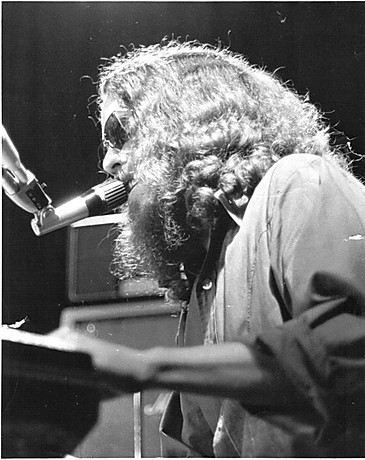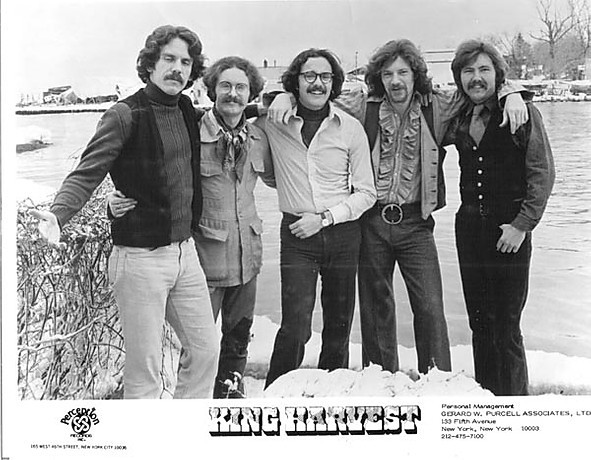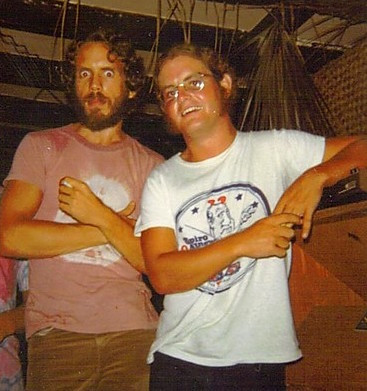“Dancing in the Moonlight” is a song that radiates pure, unadulterated joy. Its catchy melody and feel-good lyrics have made it a staple at parties, weddings, and on feel-good playlists for decades. But beneath the surface of this seemingly simple, happy tune lies a surprisingly poignant and unexpected origin story, rooted in trauma and the search for peace amidst chaos. Sherman Kelly, the songwriter behind this iconic track, experienced a life-altering event that ultimately sparked the creation of this timeless classic. This is the story of how “Dancing in the Moonlight” came to be, straight from the man who dreamed it into existence.
The Unexpected Inspiration: A Night on a St. Croix Beach
In 1969, Sherman Kelly was running a nightclub in St. Thomas, Virgin Islands. Seeking a day of adventure, he and some friends chartered a yacht to sail to St. Croix. Unfortunately, Kelly was unaware of his susceptibility to seasickness, and the journey took a turn for the worse as both he and his girlfriend succumbed to violent nausea. Upon reaching St. Croix, the group disembarked, hoping to find dinner. However, Kelly and his girlfriend were in no condition to eat, their seasickness still raging.
As evening approached, the rest of the group decided to return to the yacht for the night. Kelly and his girlfriend, glancing back at the harbor, watched the boat’s mast sway precariously against the night sky. The thought of more seasickness was unbearable, and they made a last-minute decision to stay in town. This impulsive choice, born from discomfort, would lead to a terrifying ordeal. Disaster struck when Kelly realized, in his disoriented state, he had left his wallet on the yacht, leaving them stranded without funds for a hotel.
They approached a small inn, explaining their predicament to the innkeeper, promising to settle the bill in the morning when Kelly could retrieve his wallet. The innkeeper’s response was shocking and predatory, demanding a disturbing price for accommodation. Rejected and vulnerable, they tried another inn, only to face further disappointment. Dejected and with nowhere else to turn, Kelly’s girlfriend suggested, “It’s a beautiful night. Why don’t we just stretch out on the beach?”
And so they did. This seemingly romantic notion quickly devolved into a nightmare. While sleeping on the beach under the St. Croix moonlight, Kelly and his girlfriend became the victims of a brutal street gang. Five men descended upon them, wielding baseball bats. Kelly was savagely beaten, while his girlfriend was subjected to a horrific assault. In a moment of desperate resilience, Kelly, despite drifting in and out of consciousness, fought back, creating enough commotion to scare off the attackers.
 Sherman Kelly onstage in the 1970s.
Sherman Kelly onstage in the 1970s.
Left for dead, they somehow managed to stumble along the shore, guided by distant lights, eventually reaching the only hospital in St. Croix. They later learned they were likely among the first victims of the notorious Fountain Valley Gang, who would later terrorize the island and devastate its tourism industry with a mass murder in 1972. Awakening in the hospital, Kelly overheard doctors discussing a patient in the next bed, “That’s it, he’s gone.” Then, chillingly, “What about him, you think he’s gonna make it?” The reply, “No, I doubt it,” made him realize they were talking about him.
From Trauma to Melody: Crafting “Dancing in the Moonlight”
Against all odds, Sherman Kelly survived. He spent days in the St. Croix hospital, then convalesced at a friend’s home in St. Thomas before returning to New York for further medical treatment. Doctors at New York Hospital worked to repair the extensive damage to his face and address his other injuries. Back home in Ithaca, New York, still suffering from pain and headaches, Kelly was in no condition to return to performing. However, his creative spirit remained unbroken.
It was during this period of slow and painful recovery that the seeds of “Dancing in the Moonlight” began to sprout. Confined to his home and grappling with the trauma he had endured, Kelly turned to songwriting as a form of escape and healing. He envisioned a world far removed from the violence and fear he had experienced. “I envisioned an alternate reality, the dream of a peaceful and joyous celebration of life,” Kelly explained. “It was just me imagining a better world than the one I had just experienced in St. Croix.”
The lyrics and melody that emerged were a direct contrast to the darkness of his reality. “Dancing in the Moonlight” became an anthem of hope, a sonic manifestation of the peace and joy he longed for. An unspeakably traumatic experience, one that nearly claimed his life, paradoxically became the catalyst for a song that would bring happiness to millions. “It was amazing. People liked the song right from the start. I liked it, but I wouldn’t have predicted that it would become a big hit,” Kelly admitted.
Early Versions and Boffalongo
King Harvest wasn’t the first band to record “Dancing in the Moonlight.” In 1970, Kelly joined a band called Boffalongo, which included his brother Wells Kelly, guitarist Larry Hoppen, bassist and keyboardist Dave “Doc” Robinson, and Peter Giansante. Boffalongo recorded “Dancing in the Moonlight” for their 1970 album “Beyond Your Head,” with Sherman Kelly on lead vocals.
 King Harvest in 1972.
King Harvest in 1972.
However, Kelly was deeply unhappy with his vocal performance on this version. He recounted a disastrous recording session where producers, in a misguided attempt to enhance his performance, gave him cocaine. “The first time I was in a recording studio for that version, we had these producers who thought it was a good idea to give me cocaine. That was probably the worst idea,” Kelly said. The result was a distorted and strained vocal take that Kelly felt was far from his best. Despite his personal dissatisfaction, Boffalongo’s rendition of “Dancing in the Moonlight” became a regional hit. Around the same time, another group called High Broom also recorded the song and released it on Island Records, but this version failed to chart.
King Harvest and the Hit Version
When Boffalongo disbanded, Wells Kelly joined King Harvest, a band then based in Paris. King Harvest’s lead singer was Doc Robinson, also a former member of Boffalongo. It was Wells Kelly who introduced “Dancing in the Moonlight” to his new bandmates. King Harvest’s version, featuring Robinson on lead vocals, was released as a single with “Lady Come Home” as the B-side. This time, the song resonated with a wider audience.
“Dancing in the Moonlight” by King Harvest was released on July 9, 1972, and quickly climbed the charts, becoming a major hit. It reached No. 10 on the Cash Box Top 100, No. 13 on the Billboard Hot 100, and No. 22 on the Billboard Easy Listening chart. To capitalize on the song’s success, King Harvest invited Sherman Kelly to tour with them in the summer of 1972. During live performances, Robinson handled the lead vocals on “Dancing in the Moonlight,” while Sherman Kelly provided harmonies. “Doc had a pretty good voice, better than mine,” Kelly humbly acknowledged. He even recalled a critic’s amusingly backhanded compliment: “As a singer, Sherman Kelly is not too bad of a songwriter.”
Despite the thrill of touring and experiencing the song’s popularity firsthand, the rock and roll lifestyle wasn’t for Sherman Kelly. “Imagine yourself in your twenties and you’ve written a hit song, you have some chart action and you’re traveling around. It was fun for a while,” he said. “But life on the road is ridiculous. I didn’t really care for it after awhile.” His tenure with King Harvest lasted only for that one tour.
The Enduring Legacy of “Dancing in the Moonlight”
Wells Kelly later left King Harvest and reconnected with John Hall and Harvey Brooks, with whom he had played in a band called Thunderfrog in the late 1960s. Together with Larry Hoppen from Boffalongo, Wells Kelly and Hall formed Orleans. Orleans also recorded their own rendition of “Dancing in the Moonlight,” further cementing the song’s place in music history. Even today, in its current lineup, which includes John Hall and Larry Hoppen’s brothers, Lance and Lane Hoppen, Orleans continues to perform “Dancing in the Moonlight” in their sets, keeping the song alive for new generations of listeners. Larry Hoppen passed away in 2012, but his musical legacy, intertwined with “Dancing in the Moonlight,” endures.
 Sherman Kelly, left, and Larry Hoppen, who would go on to form the band Orleans.
Sherman Kelly, left, and Larry Hoppen, who would go on to form the band Orleans.
In 2000, the song experienced a resurgence in popularity when Toploader released their cover version, which became a hit worldwide. “Dancing in the Moonlight” has also been featured in numerous films and television shows, further expanding its reach and appeal. In 2017, it was included in the video game “Guardians of the Galaxy: The Telltale Signs,” serving as the opening song for the second episode, introducing it to a new generation of fans through interactive media. The song’s consistent presence across various platforms speaks to its timeless quality and universal appeal.
Sherman Kelly’s Life Beyond the Moonlight
Sherman Kelly’s life journey extends far beyond the success of “Dancing in the Moonlight.” A graduate of Cornell University with degrees in psychology and English, he pursued further studies at prestigious institutions in Paris, Switzerland, and New York City before his songwriting career took off. Following the tragic death of his brother Wells in 1984, Sherman Kelly found the music industry too painful to navigate and shifted his focus. He earned a master’s degree in social work and psychotherapy from Syracuse University and dedicated many years to working as a psychotherapist until his retirement.
In 2008, Kelly returned to his musical roots, releasing an album titled “Burnin’ the Candle,” which included some unfinished songs he had written with his brother Wells. Despite his diverse career path, “Dancing in the Moonlight” remains his most enduring and recognized creation. It stands as a testament to the resilience of the human spirit, a song of hope and joy born from the depths of personal trauma. From a terrifying night on a St. Croix beach emerged a melody that continues to uplift and inspire, proving that even in the darkest of times, beauty and light can emerge.

